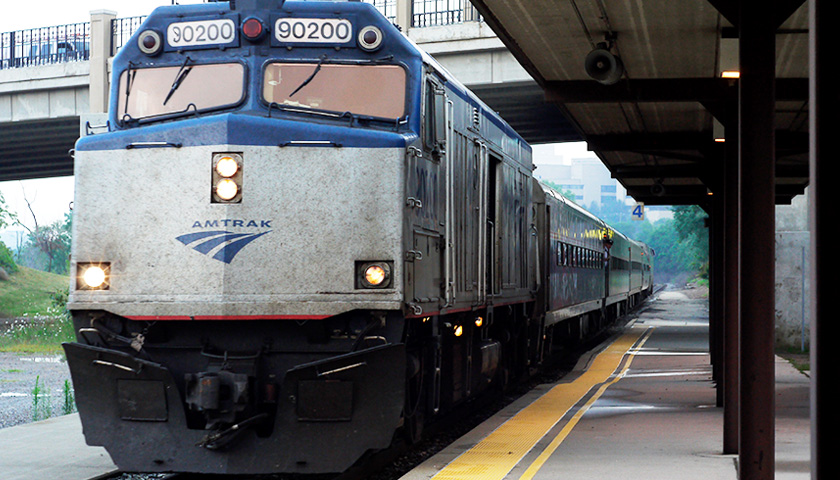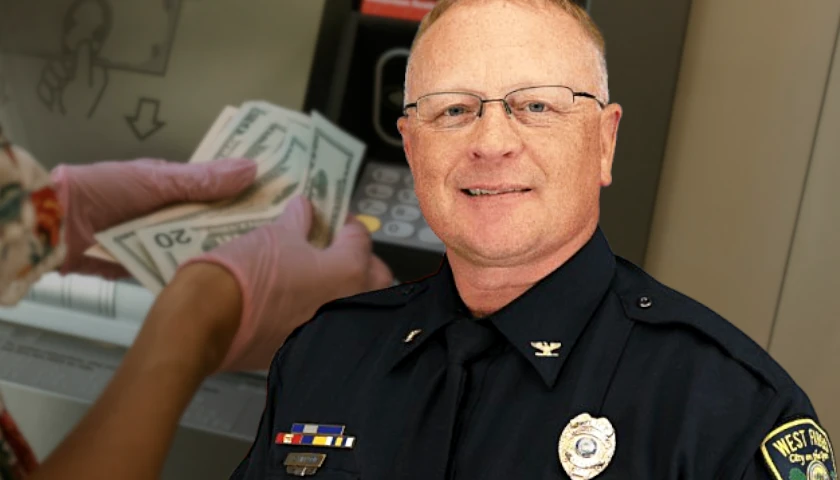by Bruce Walker
Two prominent Michigan economists, a county zoning administrator, and a nonprofit program manager scrutinized the details of a proposed Ann Arbor to Traverse City passenger rail system for The Center Square.
The feasibility of the A2TC project was discussed in separate conversations with University of MI-Flint economics professor Chris Douglas; Mackinac Center for Public Policy Fiscal Policy Director James Hohman; certified land use planner Kevon Martis, a zoning administrator in Deerfield Township, Lenawee County; and Caroline Ulstad, transportation program manager at Groundwork Center for Resilient Communities.
Their opinions were sought after state Sen. Wayne Schmidt, R-Traverse City, and chairman of the Senate Appropriations Subcommittee of Transportation, last month successfully secured $1 million in the 2023 Michigan budget for the Phase II planning study. This was followed last week by U.S. Secretary of Transportation Pete Buttigieg’s granting an additional $1.3 million in federal dollars for the same study.
Buttigieg, a Democrat and the former mayor of South Bend, Ind., who unsuccessfully ran for president in 2020, earlier this summer said he and his husband Chasten would be relocating to Chasten’s hometown of Traverse City.
“I’m not sure what transportation problem they’re trying to fix,” Hohman said. “There are already bus routes and multiple flights from Detroit to Traverse City. Add in good old-fashioned driving and people have multiple convenient options to get from one place to the other without a new and expensive train line that’s unlikely to pay for itself with fares.”
Ulstad touted the safety factors of train transportation in an email.
“According to Michigan Traffic Crash Facts, in 2020, Michigan reported that 1,083 people were killed in traffic crashes,” she said. “Fatalities can be largely contributed to the number of miles driven, so to have a realistic reduction in deaths, the public will need an alternative mode of transportation. As a local example, in 2020 amid the pandemic, crash rates fell in Michigan with around 18% fewer people on the road.”
Ulstad added the train would lower the carbon footprint of Michigan’s current modes of transportation.
“Environmental Protection Agency data shows that the transportation sector contributes the most greenhouse gas emissions in the United States, and, when looking specifically at transportation, light-duty/personal vehicle usage accounts for the largest portion of those emissions at 58%,” she said. “Alternatively, rail accounts for only 2% of emissions while providing for one-third of freight ton-miles and is estimated to be around three times more carbon efficient than cars. According to the U.S. Energy Information Administration, in 2018, Michigan ranked as the 10th highest CO2 emitter, right behind the state of New York, making it more carbon-intensive than the U.S. average.”
A2TC aims to repurpose 240 miles of train track between the two cities, with other proposed stops along the route in Howell, Durand, Owosso, Alma, Mt. Pleasant, Clare, Cadillac, Kalkaska and Petoskey. A separate potential route would head to the Detroit area. Ulstad said the project would require approximately $4 million in annual subsidies, which she noted is less than the $5 million subsidy per train provided Amtrak.
“Passenger rail has never covered its total cost of operation anywhere in the U.S.,” Martis said. “It always requires substantial taxpayer support, or in the past, cross subsidization from freight rail revenue. Passenger rail does best in very high population density corridors, like Boston to New York or DC. Each of those metroplexes has millions of people who can access rail. But this proposed passenger line from Ann Arbor to Traverse City connects only one community with more than 100,000 people: Ann Arbor. All the other communities on the route have populations of 20,000 or less and two, Howell and Durand, have only 9,610 and 3,519 people respectively.”
Ulstad said, “Almost all forms of transportation in the United States, like local roads, highways, and airports, are subsidized to some degree and we do so to provide the public with various travel options to meet their needs. While a bit like comparing apples and oranges, I often think about how this rail line is around 240 miles long but just a 6.7-mile stretch in Detroit of I-94 between I-96 and Conner Avenue is likely to cost around $3 billion.”
Martis cited the 2018 GCRC study of the A2TC, claiming railroad ridership would reach 1.2 million each year, which would gross $100 million in annual fares.
The 2018 GCRC study concluded it would cost approximately $151 million in 2017 dollars for a 60 mph train traveling safely on existing rails, which would include track and rail upgrades; bridges; train control systems; crossings; placeholder infrastructure; and equipment.
Nevertheless, the study concludes the service, “if fully developed as proposed, could cover its operating costs and that its economic benefits would substantially exceed its capital and operating costs.”
An entire one-way route would require an estimated five hours at a maximum high speed of 60 mph provided by diesel engines. Higher speeds would be possible, but also comes with an additional $1 billion price tag to upgrade tracks.
“The current 2018 study on this project predicts 1,239,000 riders per year on the proposed line by 2050. That is roughly 4,000 people per day, every day, year-round. Put another way, it would equal 25% of the entire population of Traverse City, 50% of the population of Alma or more than 100% of the entire population of Durand to ride this train every single day to reach 1,239,000 riders per year,” Martis said, noting the Groundwork study estimated the A2TC would require $4 million in annual subsidies to operate one train on the route each day.
“These numbers are far-fetched to say the least,” Martis said. “Michigan’s busiest Amtrak corridor is the Wolverine, which connects Detroit to Chicago. In 2019, pre-pandemic, that route moved approximately 500,000 people. That is far less than half of the projected number of patrons for the Ann Arbor to TC route which is roughly the same length. From memory, both Detroit and Chicago are larger than any city on the new route.”
Public transportation ridership declined precipitously during the COVID-19 pandemic. The Ann Arbor Transportation Authority’s unlinked trips (total boardings on an individual vehicle) dropped from 6.9 million in 2019 to 3.9 million in 2020, according to the Federal Transit Administration. Ann Arbor’s fixed-route ridership was still down 39% from the prepandemic 2019 but was up 79% from 2020, during enforcement of the pandemic stay-at-home order from March 23 through June 1, 2020. The Bay Area Transportation Authority, which is located in Traverse City, had its unlinked trips drop from 591,307 to 402,947 over that same time period.
If the A2TC moves forward, completion is anticipated sometime in 2025. Shorter routes could be up and running prior to that.
“When comparing ticket costs for the Detroit to Chicago Amtrak route, it looks like the current cost for a family of four to travel round trip from Ann Arbor to TC would run $400 to $600,” Martis said. “And it would leave that family without transportation once arriving at their destination. Add the cost of taxis or public transport on the destination end, coupled with the inevitable delays for passenger trains that share the rails with freight service, and you certainly have no transportation bargain. And with the rise of self-driving electric cars which could radically increase the efficiency of our use of interstate highways, it is reasonable to conclude that passenger rail remains a dinosaur on life support with its demise just around the corner.”
Douglas also expressed his skepticism for claims for A2TC anticipated riders and “overstated revenue projections,” calling them “wildly optimistic” and “highly implausible.” He noted the People Mover elevated train and QLine streetcar in Detroit lose $2 per rider and Amtrak’s rail passenger service routinely loses money.
– – –
Bruce Walker is a regional editor at The Center Square. He previously worked as editor at the Mackinac Center for Public Policy’s MichiganScience magazine and The Heartland Institute’s InfoTech & Telecom News.
Photo Amtrak in Ann Arbor, Michigan” by Chad Kainz. CC BY 2.0.





